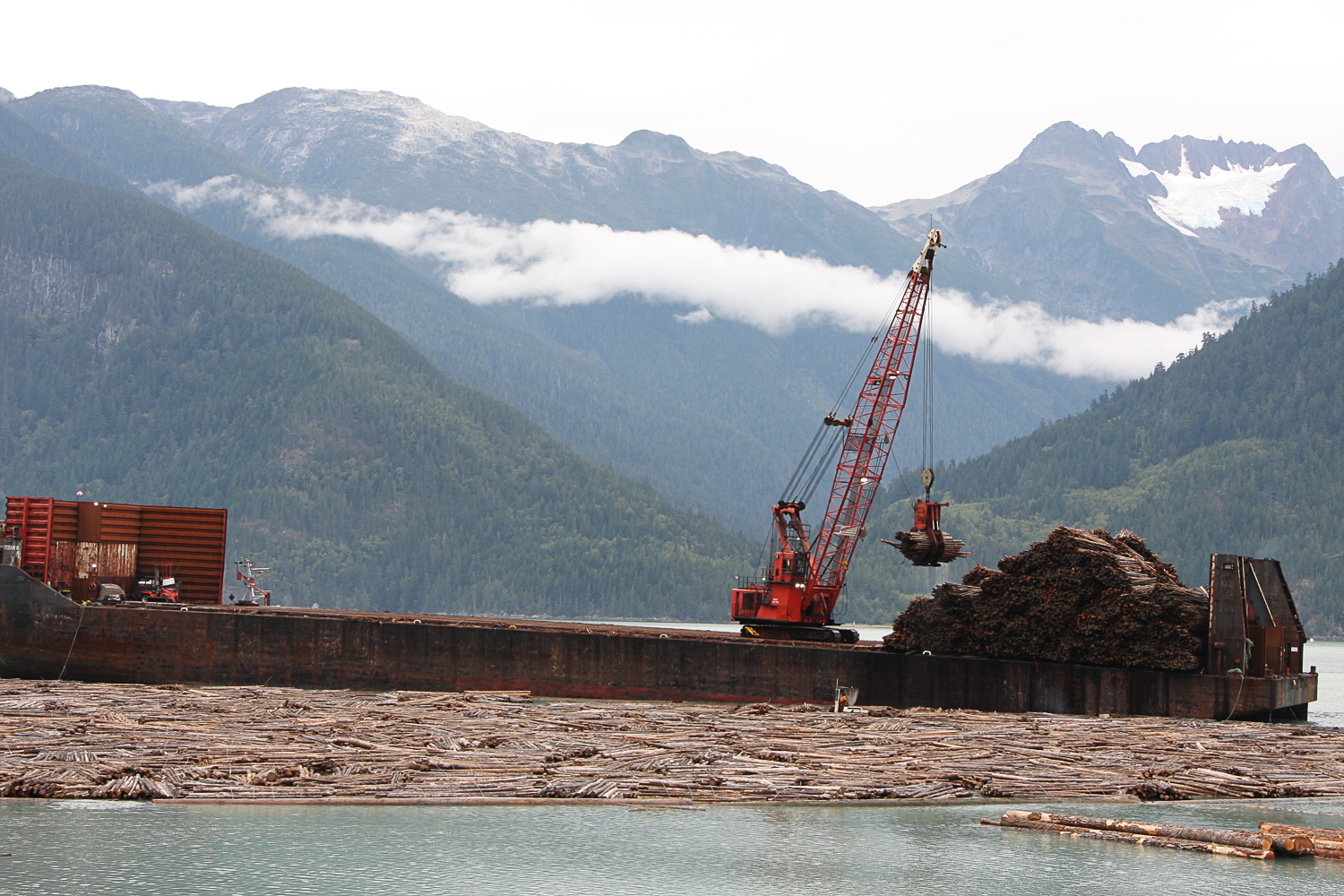
Features
Environment & Sustainability
Forestry
Pulp
Chilcotin fibre recovery project finding new markets for pulp logs
September 17, 2019 By Forest Enhancement Society of BC

A Forest Enhancement Society of B.C. (FESBC)–funded fibre recovery project in the Chilcotin region of B.C. is increasing utilization of forest fibre by 20 per cent and the number of full-time jobs by 20.
The FESBC funding is enabling Ulkatcho First Nation-owned West Chilcotin Forest Products (WCFP) to bring forest fibre to market that would normally be left behind or burned as waste in cut blocks.
New pulp logs for Harmac Pacific
Over the winter and through early spring, WCFP was unable to haul the pulp logs into Bella Coola due to the severity of seasonal storms that hit the Bella Coola Valley, which prevents safe log hauling, storage and barge loading. A provincial shortage of haul trucks presented an added challenge even if there had have been a good weather window to load the log barges.
“The West Chilcotin plateau lacks the infrastructure many other areas of our province take for granted,” says Stephen James, executive director of WCFP. “Given the distance to markets for our forest products, enhanced utilization of our forest fibre has always been a struggle. With funding from FESBC, we can now start to do our part to fight climate change while at the same time provide much needed employment for our band members.”
Despite the current challenging state of the forestry industry, WCFP reached another production milestone. Pulp wood that was being burnt this time last year is now sitting in bundles at the reload area in Bella Coola, ready to be loaded onto a barge. This fibre will be barged to a chipper and then on to Harmac Pacific Pulp mill to be made into pulp.
“It’s impressive to see thousands of cubic metres of pulp wood ready in the water, having safely been processed and hauled to Bella Coola,” says Dave Conly, operations manager at FESBC.
Making use of a fibre surplus
Historically, fibre has been left in piles along forest roads and is legally required to be burned. By moving and using the fibre instead, less is burned and there is a reduction in greenhouse gases (GHG). Some GHGs contribute to climate change so by avoiding these emissions, the project is contributing to the provincial and federal climate change mitigation agreements.
“The Ulkatcho First Nation, as an owner of WCFP, very much appreciates the support of the governments of B.C. and Canada,” says James. “The funding they’ve provided through FESBC to assist with fibre utilization is a great benefit to our community and to our environment.”
The project brings economic benefits to the region in terms of jobs and community benefits via relationship- building between the community of Bella Coola and Harmac Pacific. “This project is a great initiative as it provides a few extra much needed jobs for our community and it reduces the amount of wood left in the bush to be burnt,” says Ulkatcho First Nation councillor Charlie Williams.
FESBC’s Conly sees the fibre utilization project as a good news story. “Even though there have been some implementation delays, it is clear that during the current economic downturn in the forestry industry, this project supports coastal paper production, provides economic benefits for the west Chilcotin area, and reduces carbon production and environmental impacts.”
Print this page